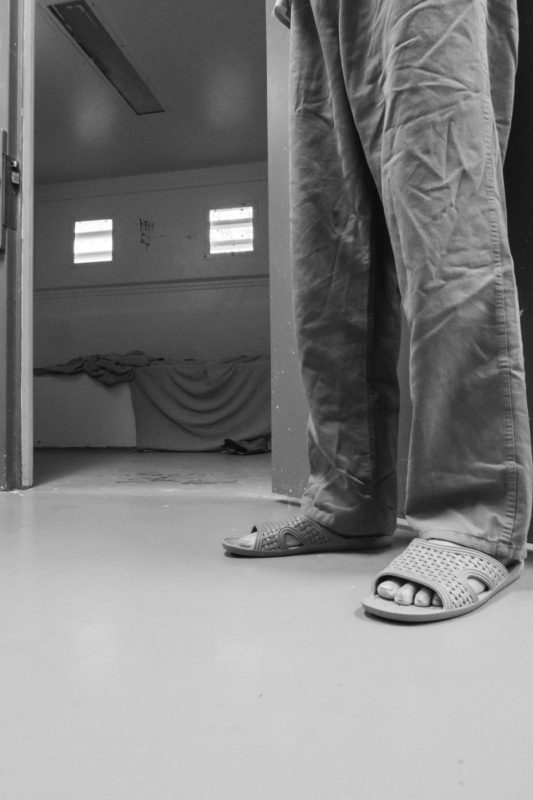Clinic students integral to DRO report on treatment of mentally ill in detention center
Open gallery

On March 1, 2017, Disability Rights Oregon (DRO) released a report, A Merry Go Round That Never Stops: Mental Illness in the Multnomah County Detention Center, on the conditions at MCDC. On March 5, the report was featured in an article in the Oregonian and an editorial by the editorial board, calling for much-needed attention to the treatment of the mentally ill in jail facilities.
Two second-year Lewis & Clark law students, Jody Davis ’18 and Hannah Teig ’18, played an integral role in researching, writing and editing the report as part of the law school’s Criminal Justice Reform Clinic (CJRC), directed by Professor Aliza Kaplan. DRO attorney and author of the report, Sarah Radcliffe, joined forces with Professor Kaplan and the CJRC students to investigate MCDC and produce the report with the goal of learning how prisoners with mental illness are treated at MCDC.
The DRO report details the findings of a lengthy investigation into the jail conditions and treatment of mentally ill individuals in Multnomah County Department of Corrections jail facilities. Results show an ongoing and persistent problem relating to use of force against mentally ill individuals in Multnomah County jails.
Over 100 incidents over the course of one year at MCDC were reviewed for the report. Most incident reports involved inmates already housed in the mental health unit, inmates on suicide watch, and/or inmates experiencing a severe psychiatric episode or emergency. CJRC students collected and analyzed incident reports that specifically involved involuntary use of restraint chairs or restraint boards, and other frequently used restraint methods. Other jail-sanctioned techniques were particularly horrific, said Davis. “One individual was restrained after a guard used ‘focused blows’ to the inmates face to get compliance.” She explained ‘focused blow’ as a dressed-up term for directed, intentional punches. “The ‘focused blows’ broke nearly every bone in this person’s face, yet not one supervisor review of the incident found any inappropriate use of force.”
After analyzing the data, the students turned their attention to the most egregious incidents from the facility. Using incident reports from staff, supervisor reviews, and hospital records, Davis and Teig wrote many of the compelling narratives featured in the report. The narratives illustrate the experiences of individuals in custody who are often exhibiting behaviors attributable to untreated mental illness (such as psychosis or self-injurious behaviors) and the response by correctional officers. In the worst cases, individuals required hospitalization because of the excessive force used by the correctional officers. Of her experience researching and writing these narratives, Teig noted, “It’s heartbreaking to read these stories about people who have everything stacked against them, not one but two stigmas: being mentally ill and an inmate.”
While working on the DRO investigation and report, Davis and Teig participated in MCDC jail visits to document cell conditions and speak with inmates and staff. “It was one thing to read, but another thing to go visit and see what kind of conditions these individuals were living in,” said Tieg. Another CJRC student, Chad Marquez ’18, lent his creative eye to the project, capturing the images featured in the report.
The impact of the report remains to be seen, but DRO and the students who assisted with the report hope that leads to better ways to meet the needs of the mentally ill.
Law Communications is located in room 304 of Legal Research Center (LRC) on the law Campus.
MSC: 51
email jasbury@lclark.edu
voice 503-768-6605
Cell: 626-676-7923
Assistant Dean,
Communications and External Relations, Law School
Judy Asbury
Law Communications
Lewis & Clark Law School
10101 S. Terwilliger Boulevard MSC 51
Portland OR 97219

